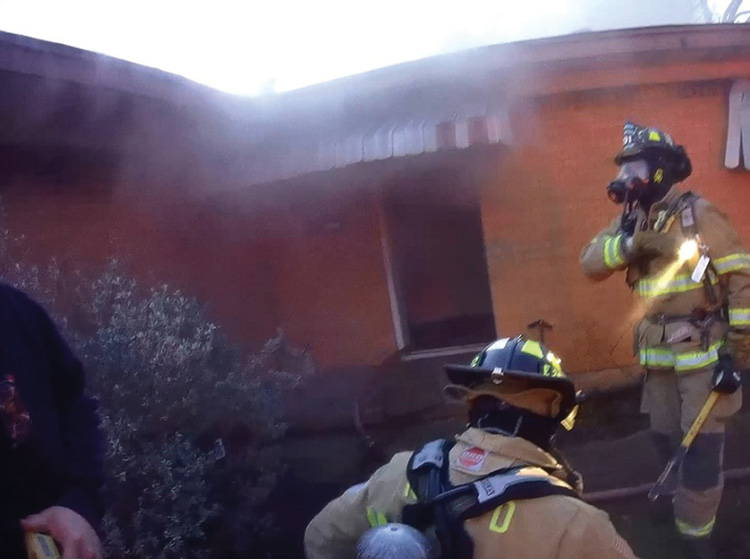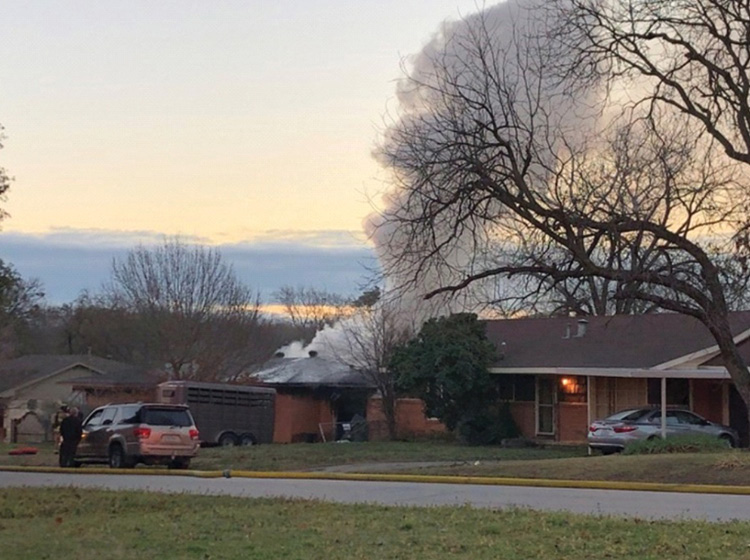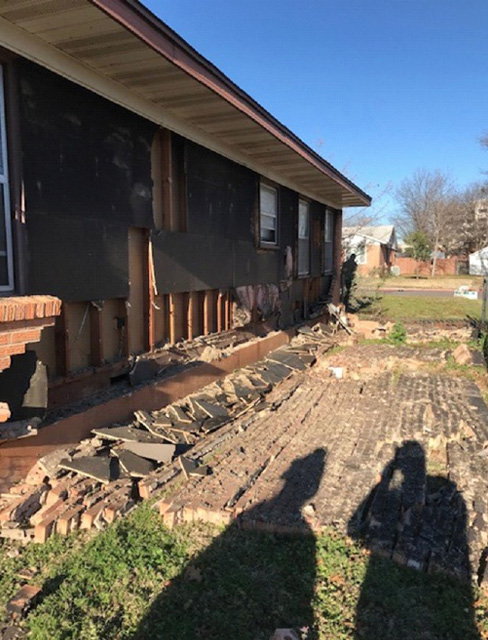
WHAT WE LEARNED ❘ By STEPHEN GREEN and RUSSELL SHELLEY
On January 2, 2019, the Richland Hills (TX) Fire Department (RHFD) responded to a reported structure fire. On arrival, crews found a single-story working fire in the structure’s garage area. During its initial attack, mutual-aid crews experienced what was being described as a smoke explosion. This “bread and butter” fire could have had untoward consequences. As you will see, the RHFD’s initial attack, incident command, and incident action plan were all in place, and the department followed standard operating procedures.
Before we talk about smoke explosions, we must understand the differences between a backdraft and a smoke explosion. These two occurrences are commonly mistaken for each other. However, they are very different. A backdraft involves a fire that has become vent limited to the point where active combustion has hit the “pause button.” The products of combustion are still above the flammable range; what is missing is the mixture of enough air to reach the lower explosive limit, which is why, when the air is suddenly added, we get the reaction of an “explosive event.” A smoke explosion is similar. However, although the air/fuel mixture is above the flammable range, the mixture is below the ignition temperature of the products of combustion. So, when we vent the “container,” the mixture searches for an ignition source. In addition, the mixture does not need free-burning materials to ignite.
So, what is the actual definition of a “smoke explosion”? Following are several factors to consider:
- A smoke explosion can and possibly will involve cold smoke.
- The concussive wave can be extremely violent and sudden.
- Typically, the ignition range is lower, nearer to 650°F, which research shows to be common with today’s combustibles.
- The mixture usually has a layer of flammable smoke already within it ready to go; it just needs sufficient heat.
- A backdraft relies on air to complete the concussive wave. A smoke explosion relies on only one ignition source.
One thing missing from the equation is the container. In today’s modern construction, the lightweight homes can have numerous compartments, and numerous attic spaces are very common in the southern United States. Our legacy-constructed homes typically have very limited attic space. Either one of these areas can hold a compressed volume of smoke.
ALSO
Environmental factors can also contribute to this work hazard. On cold or wet days, smoke will hang lower and not vent as freely. On windy days (commonplace in north Texas), the smoke can be pushed into areas of a structure without any forcible ventilation done by on-scene personnel.

(1) The initial on-scene visual. (Photos by Russell Shelley.)

(2) The crew is about to make entry through side A and then move to side B to go to work during the incident. Note the laminar flow of smoke from eaves; this indicates low-pressure interior conditions.
In this case study, our container had all the elements needed for a smoke explosion. We had a small container—a legacy home of approximately 1,100 square feet with an active fire migrating toward the attic. In addition, no external ventilation had taken place, the rooftop was secure, and fire had not broken through that space.
As shown in the photos, the smoke presentation from the initial knockdown does not indicate high pressure, as its flow was mostly laminar in nature. Photo 2 (the A/B corner) shows where the crew made entry through side A; they then went to side B to go to work. A quick knockdown checked the fire, but the smoke continued to build in the attic space. Crews initially used 200 gallons of water on the initial attack.
Incident Demographics and Timeline
The staffing, chronology, and weather conditions for the incident were as follows:
- Four personnel were on duty.
- The initial call came at 0710 hours.
- The initial unit (Chief 290) was on scene at 0714 hours.
- Engine 291, Medic 291, and Engine 222 were on scene at 0715 hours.
- There were partly cloudy and cool conditions with a light north wind.
- There were morning rush traffic conditions.
- No impediments to response were noted.
Initial Size-Up/Findings
Following are the initial on-scene observations by Chief 290 (Hardisty Command):
- It was a small, one-story residence with heavy smoke and fire showing, a working fire, an offensive strategy, continued current assignment.
- Residents in the front yard confirmed all occupants and pets were out of the house.
Initial Actions
The initial actions of the arriving crews were as follows:
- Engine 291—Two personnel were assigned as primary search/fire control. They made a quick hit on the garage fire before moving an attack line to the front door and moving toward the main fire.
- Medic 291—Paired with the acting captain from Engine 291.
- Engine 222—Provided water supply to Engine 291 and then was assigned to stretch a second attack line and search to the Bravo side for extension.


(3, 4) The after-effects of the explosion. As you can see, some bricks have been blown off.
Other First-Alarm Companies
The following two companies were also assigned to the first alarm.
- Q472—Assigned initially to control utilities and then to fire attack and overhaul after the near-miss event.
- Q203—Assigned to “on deck” status on the Alpha side, then to fire attack and overhaul after the near-miss event.
The Near-Miss Event
The specifics of the smoke explosion and its response by the crews were as follows:
- At 0725 hours, while two crews were working on the interior, a smoke explosion occurred in the attic that shook the home and caused the Bravo side brick wall and part of the Charlie side brick wall to collapse.
- Command immediately transitioned to a defensive strategy as crews exited the structure.
Watch for cut-up homes and additional areas where smoke can congregate. Also, be wary of basements—they can house the same conditions. Always know your district and the construction of its buildings.
STEPHEN GREEN is a 25-plus-year fire/emergency medical services veteran. He is a TCFP master firefighter, an instructor III-master, a former field training officer, and a former training officer. Green is a lieutenant at Station 37 with Parker County (TX) Emergency Services District 1 and the Texas Intrastate Fire Mutual Aid System coordinator. He is also an adjunct instructor for Tarrant County (TX) College at the Fire Service Training Center. Green was added to the International Society of Fire Service Instructors’ Curriculum Development Committee for 2018.
RUSSELL SHELLEY is a 28-year fire service veteran, with more than 16 of those years as a chief officer, and the chief of the Richland Hills (TX) Fire Department. He has a master’s degree in executive fire service leadership from Grand Canyon University. Shelley is a graduate of the National Fire Academy’s Executive Fire Officer Program and has the Certified Public Manager designation through Texas State University.

